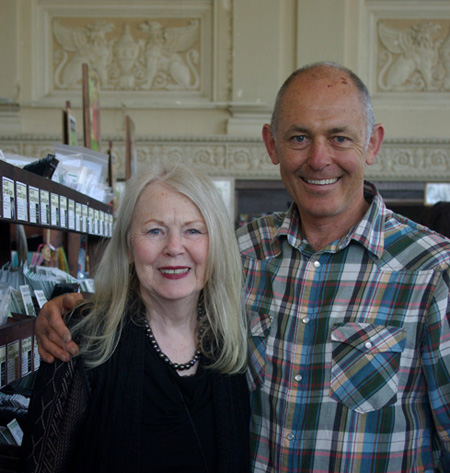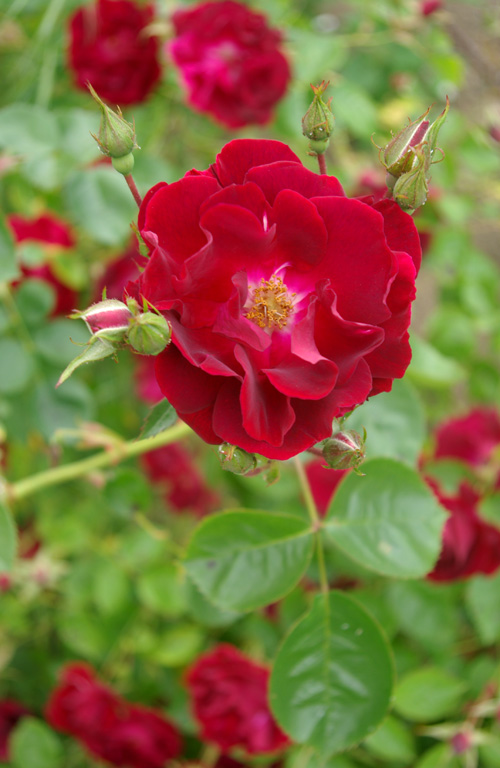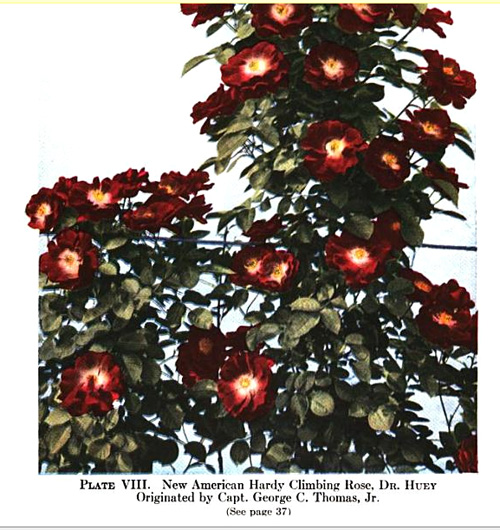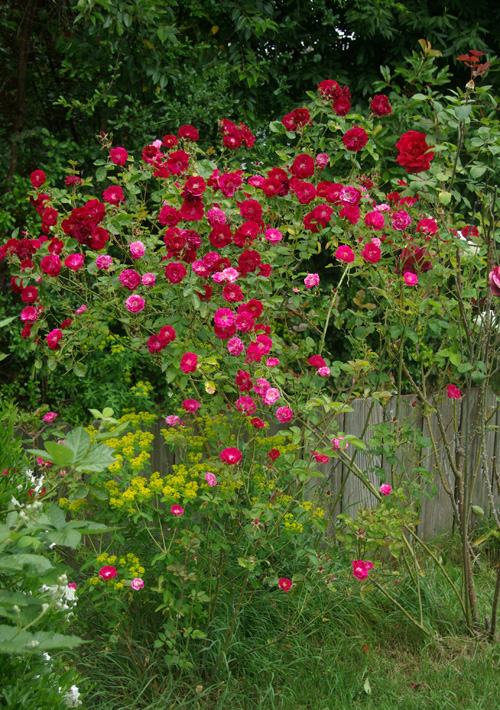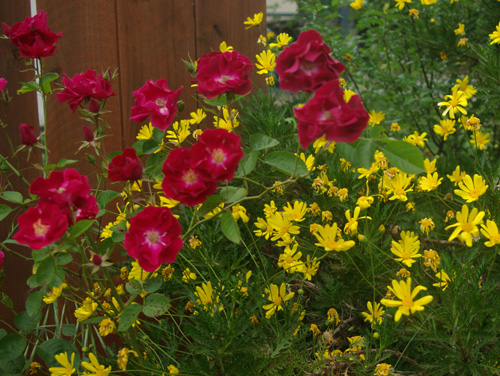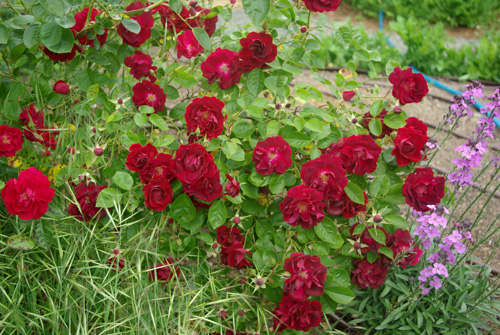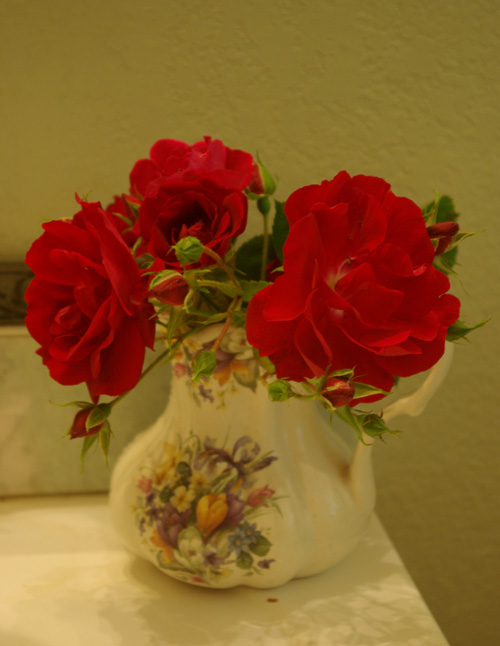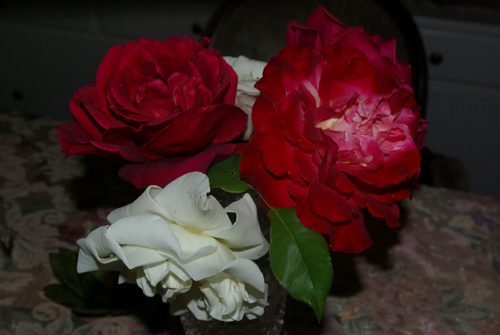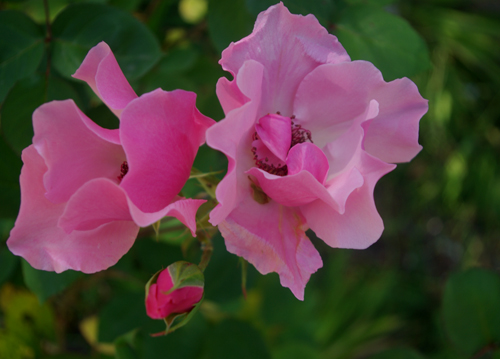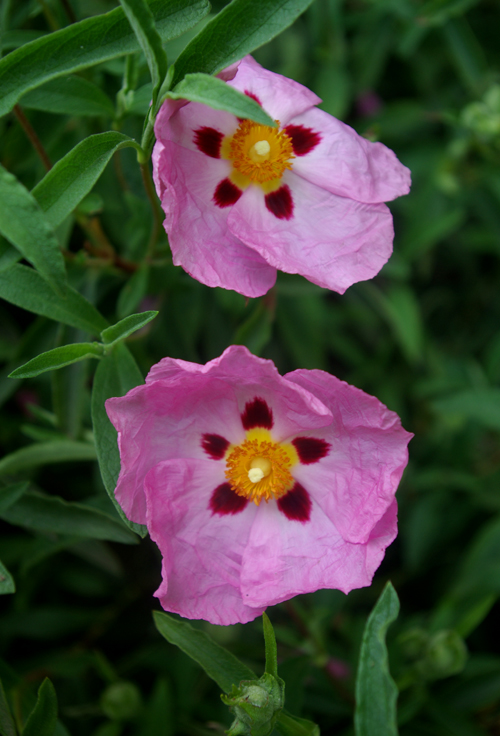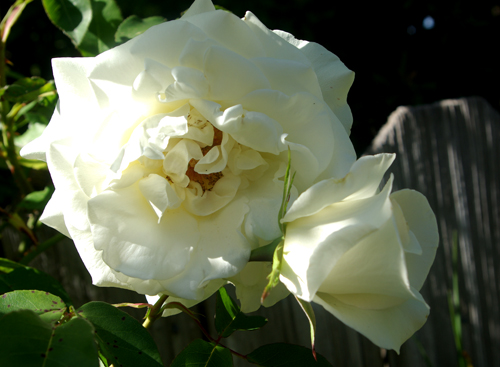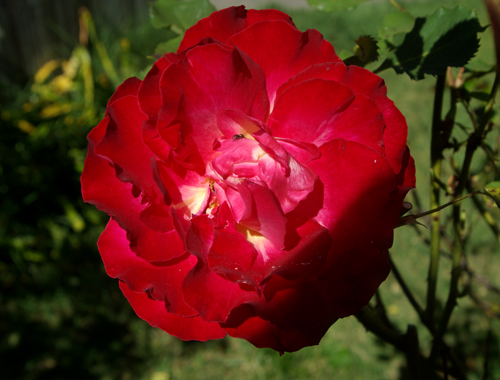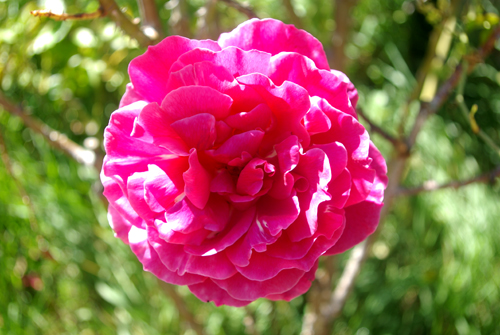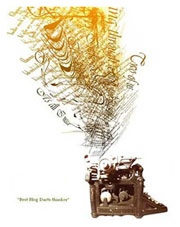“To make a prairie it takes a clover and one bee, One clover, and a bee, And revery.”
~Emily Dickinson
After days on end, no weeks on end of rain and further rain at last there is a break in the wet weather. Blue skies, bright sun and a delayed spring have at last returned to Northern California–necessitating the need, finally, for actually considering the Mowing of the Lawn. I’d been contemplating this for some days, anxious to begin on the one hand, to bring about some normalcy and caring to the front yard, but unexpectedly hesitating, for there, in the middle was a rather large chunk of white clover about the birdbath, which the bees had discovered and I was wont to cut, frankly.

I deliberated as the ground dried out sufficiently to actually bring out the mower. And in that interim a teeny rebellious thought took root. What if I didn’t actually mow the clover area? What if I let it be? What if I mowed a respectable circle around it, or a square, and gave the bees, now in abundance, their due? Hadn’t they suffered more than I with the unduly late arrival of spring? Didn’t they need the pollen more than I needed the neat and respectable appearance of a lawn well kept? Well? I thought they did.
And, so, dear readers, when I at last did bring out my much loved Lawn Boy, my shy grin widened increasingly as I cut closer and closer to the clover, knowing full well what I was about to do. For who, anyway, would contemplate for a second charging into the beloved busy bees at their work with a motorized blade? What heartless creature? Not I. And so the bees had their way!
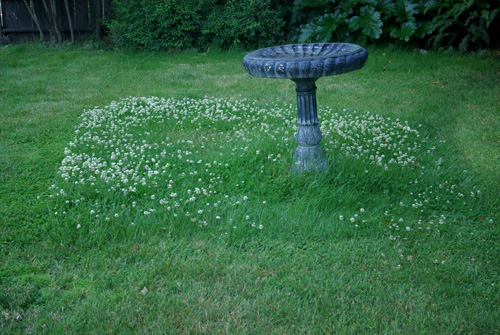
Creating the above I was literally laughing out loud. I don’t think I’ve enjoyed a lawn mowing ever as much. For sure not. And here is the happy result.
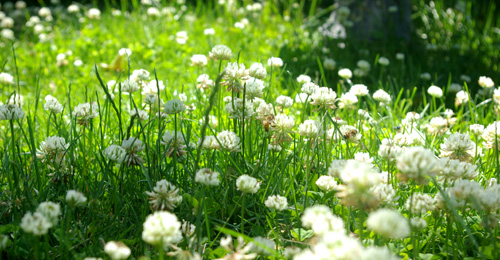
What can you do for a bee this week?
Bee Facts to Ponder
*The average worker bee produces about 1/12th teaspoon of honey in her lifetime.
*About one-third of the total human diet comes directly or indirectly from insect-pollinated plants
*Bees fly an average of 13-15 mph. They can fly up to 20 mph.
*Honeybees visit about 2 million flowers to make one pound of honey.
Love and garden blessings,
Kathryn xoxo
Book Notes: Many thanks to all who came to meet me at Baker Creek Seed Bank’s 2-year Anniversary Celebration in Petaluma on June 12th! It was such a joy to see you — and to meet new readers in person! This wonderfully rich gathering also afforded me the opportunity to finally meet in person Paul Wallace, the man directing the West Coast Baker Creek Seed Bank! He’s as lovely as I expected!
Posted on June 9th, 2011 by Kathryn
Filed under: Animals | 9 Comments »

